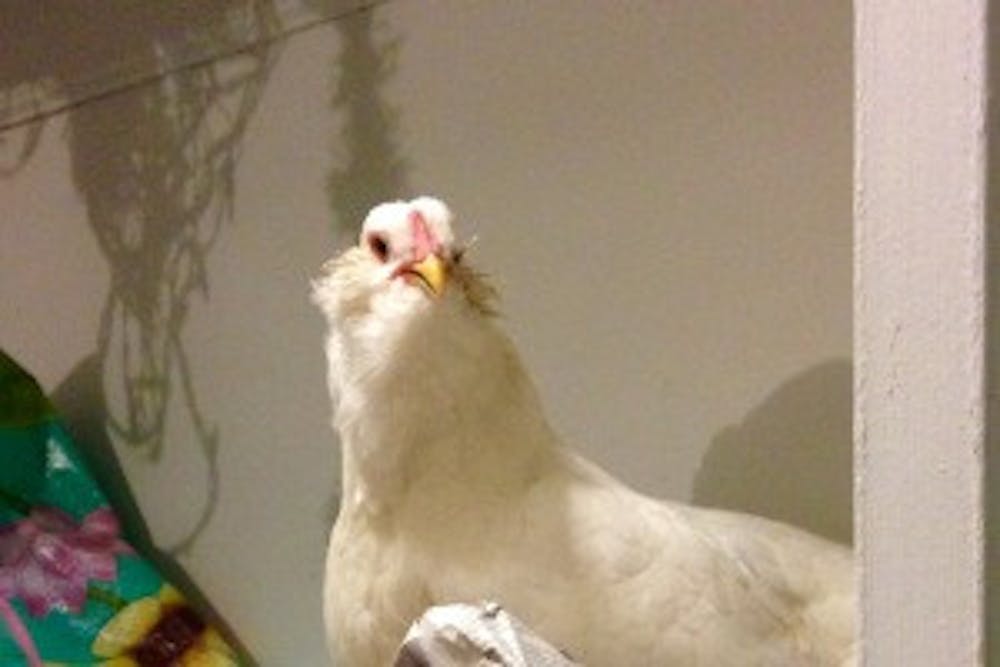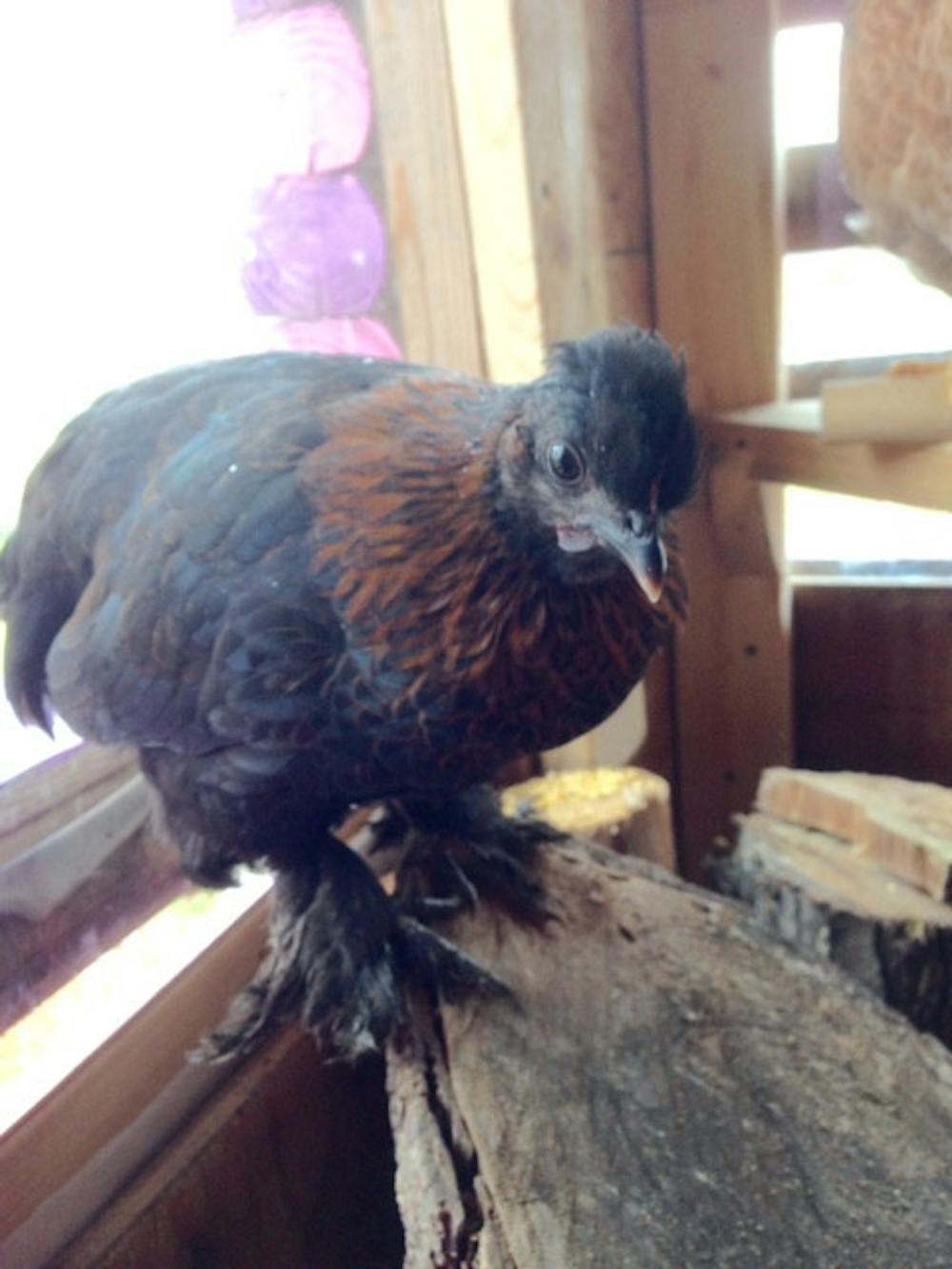It’s not easy being green on campus. The recycling bins do wonders to reduce our ecological footprint, but for some, it would feel more satisfying to also grow some of their own food instead of grabbing ready-made snacks and meals at Miami University’s fine dining options. Gardening is a wonderful solution to this—it can be done on a patch of land, a nice garden bed, or in containers that can be carried indoors and out, depending on living situation.
A slightly higher maintenance, but, to some, even more rewarding, way of getting sustainable food is having their own chickens.
Unlike gardens, chickens aren’t an option for someone in a condo, or without a backyard. In some places, like in Cincinnati, hens are allowed but roosters are not. Oxford residents within city limits, are allowed a maximum of four chickens, but roosters forbidden. Neighboring towns like Riley and Hanover do not have any restrictions on gender or number of chickens.
Keeping chickens is a mix between gardening and owning a dog or cat. They will not want to cuddle, but their antics and warbling make them awfully fun to watch and feed. Chickens will follow you around whenever they suspect you have food, and they look very endearing running around a backyard in little groups. They are animals to care for, that will give you wonderful eggs, but despite being sometimes very cute, they will not be your companions.
The plus side of this is that they also do not need as much attention as a cat or dog, just a regular coop cleaning, some kitchen scraps or leftovers to nibble, and a chance to run around outside.
To have happy chickens, they need a coop. A coop can be bought or built, or, if you are incredibly handy, an old playhouse can be converted. Chickens need to be fed appropriate food—again, there is plenty of information on the Internet that can be wonderfully helpful.
In Oxford, feed can be bought at the Whistle Stop or Wal Mart. In Hamilton, Rural King and Tractor Supply also carry feed. Chickens also need water, and chicken waterers are likely the best things to quench their thirst. If the hens are healthy, well fed, and of age, it’s quite likely they will begin laying during spring.
Different types of hens lay different amounts of eggs, as well as different colors. I have a type of hen called an Easter Egger—she gives me large robin blue eggs - about 5 a week.
Two of my other hens, a Barred Rock and a Rhode Island Red, give me an extra large pinkish brown egg, and a small dark brown egg, respectively. I get between 1 and 3 eggs a day, which is more than enough. Each different type of chicken will have different egg laying habits, temperament (from friendly to flighty), and appearance. When I first got my chickens, I thought I wanted nothing but eggs, but later realized that a cute chicken was a very valuable thing, and got a few chickens just for looks. In the end, I’m incredibly happy that I have such adorable birds in my life.
Chickens are enriching creatures, and a delightful addition to anyone interested in using sustainable living to make themselves breakfast.

Sustainable Eating: Raise Chickens

